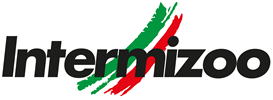In April 2020, the Italian Association of Holstein Fresian (ANAFIJ) realeased a new genetic index for the selection of the Italian Holstein population. This new selection tool is called Feed Efficiency Index (pFE), which indicates the ratio between the milk production (kg) and the dry matter intake (DIM).

Bovine Feed Efficiency is one of the most studied character in Animal Science. As a matter of fact, more efficient animals allow to reduce feeding cost, one of the major costs of the farm, and lower the environmental impact of the production chain.
Feed Efficeincy can be calculated in two different ways:
- Direct phenotype: the experimental measurement of feed ingestion and milk production could be very difficult and expensive. For this purpose, ANAFIJ has defined a project, called LATTeco, which has the aim to study individual feed intake and milk production, thanks to specific instruments and tools. Then, genetic correlation will be calculated in order to evaluate the feed efficiency of the entire population.
- Indirect phenotype: it is a predicted phenotype that match the available data from the national system of data collection and the prediction formulas of highly feed efficiency-correlated characters.
From December 2019 ANAFIJ publishes the results of the LATTeco project. The Feed Efficency Index (pFE) can now be used for Italian Holstein selection schemes. The current FE Index is based on predicted phenotype and it is composed by cows linear traits evaluation and productive informations of the national data collection system, related to predicted dry matter intake.

The Feed Efficiency Index is 100 based, that means bulls with values higher than 100 are Feed Efficiency improvers. The reliability is 95% for proven bulls and 64% for genomics. This Index shows a positive correlation with PFT, IES and ICS-PR, three Italian Indices that have directly or indirectly selected for more efficient animal over the years, even though the variability is still high, as figures below show:

The introduction of this selection index allows to improve the Italian Holstein population not only for economic reason but also for a most environmental-friendly production. In the upcoming years, ANAFIJ is going to insert feed efficiency also in IES and ICS-PR. This choice underlines the importance of environmental footprint in livestock production and modern breeder feelings on this topic.
How much do high FE index-bulls influence the milk production and its economic cost? Here there is an ANAFIJs sample case that will help us to understand the difference between low and high FE Index-bulls:
FE Index | Phenotype |
> 105 | 1,32 |
95-105 | 1,27 |
< 95 | 1,21 |
Here there is the comparison between cows with same dry matter intake but difference milk production, due to different feed efficiency index values:
| Dry Matter Intake (DMI) | Phenotype | Milk Production |
>105 cow | 23,63 kg | 1,32 | 31,18 kg |
<95 cow | 23,63kg | 1,21 | 28,58 kg |
The milk price is 0,40/Kg and dry matter price is 0,28/Kg. Each cow has different milk income and dry matter total cost, as shown:
| Milk Production | Milk Price | Milk Income |
>105 cow | 31,18 kg | 0,40/Kg | 12,47 |
<95 cow | 28,58 kg | 0,40/Kg | 11,47 |
| Dry Matter Intake (DMI) | Dry Matter Price | Dry Matter Total Cost |
>105 cow | 23,63 kg | 0,28/Kg | 6,61 |
<95 cow | 23,63 kg | 0,28/Kg | 6,61 |
So, thanks to high FE index cow, EXTRA income will be..
| Milk Income | Dry Matter Total Cost | Income | Income at 305gg |
>105 cow | 12,47 | 6,61 | 5,86 | 1 787,3 |
<95 cow | 11,47 | 6,61 | 4,82 | 1 470,1 |
>105 cows EXTRA Income | +317,2 | |||
However, it is important to point out that the genetic potential expression have to be in sync with management choices of the farmer.
Here there is the top of Intermizoo bulls for Feed Efficiency:

Tags: ANAFIJ, Italian Association of Holstein Fresian, Feed Efficiency Index, pFE, Milk Production, Dry Matter Intake (DMI), PFT, ICS-PR, IES, Phenotype, LattECO.

